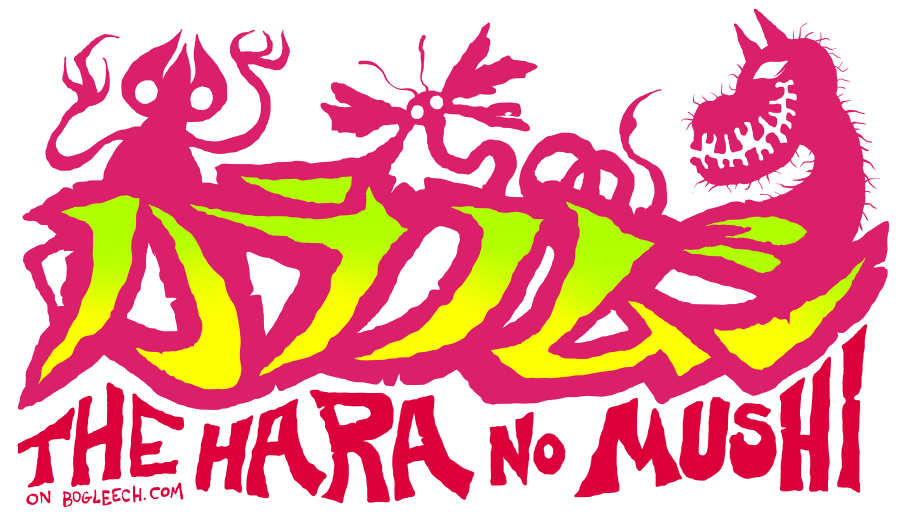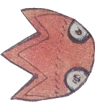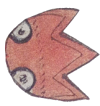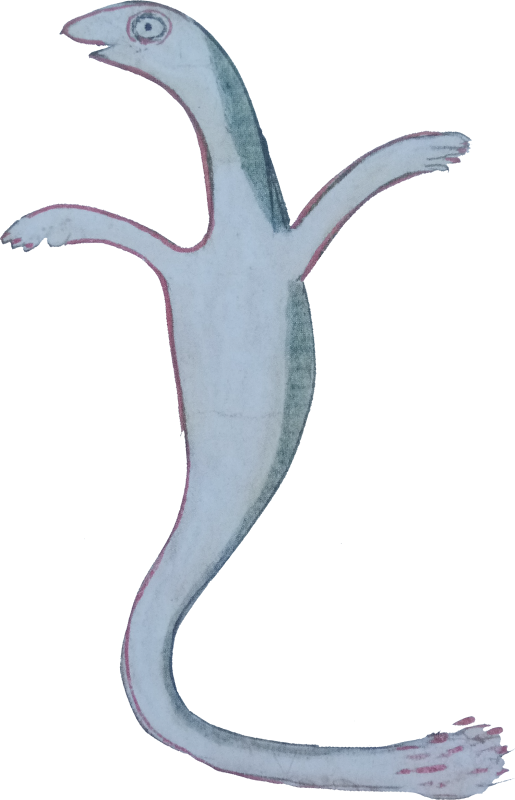
DAY TWENTY ONE: SOI NO KANMUSHI
("Spine-Warping Liver Bug")
Written by Jonathan Wojcik, Researched and Translated by Rev Storm
The spine-warping liver bug is said to be responsible for all spine-warping illnesses, even though we just looked at a whole different bug that causes hunchback a couple pages ago. Maybe the Bearded Kidney Bug can just cause hunchback, while the Spine Warping Liver Bug can also cause hunchback and anything else that deforms your vertebrae?
Design Review:
This one feels very different from other designs we've seen. It's almost like a cute little baby dinosaur without any hind legs! Or like a fat salamander! I wish there was a little more explanation in the book for the purposes of its brushy tail or little arms; some of these are left to our imagination, while others demonstrate more detailed reasoning behind their designs.TODAY'S REAL WORLD PARASITE:
Clonorchis sinensis

Only one parasitic worm will really affect your spinal column, but we're saving that one for a later entry! Instead, let's talk about the one kind of parasite that really does inhabit your liver, sort of. The Chinese Liver FLuke C. sinensis is of course another fluke species, one of the three most common parasitic worm infections in humans and another parasitic worm whose intended, definitive host is us.
Like seemingly every dang fluke, this species begins life as a larva inside of an aquatic snail. Eventually the larvae become cercariae, which in many other flukes are highly active, tadpole-like swimmers. These cercariae do things a little differently, instead hanging upside-down in the water, allowing themselves to sink for a short distance, and then floating back up again. This increases their odds of bumping into a suitable fish host without expending too much energy, since they have no means of feeding in this stage and need to find a home in only a couple of days before they starve. Once a fish bumps into them, they latch on with their suckers, burrow inside, and of course encyst themselves in the muscle tissue.
Over a couple hundred fish species and even a few shrimp species can play host to this parasite, but all of them freshwater, so don't worry about this one from most of the good sashimi, like yellowtail or tuna. When they do end up in a human, the cyst wall is digested by our stomach acids and the freed juvenile bores its way out of the intestinal mucosa to enter the bile ducts, where the parasite actually feeds on bile itself. The adult worm grows quickly, becoming visible to the naked eye and living for an incredible duration of up to thirty years.
None of this of course will warp your spine, but the presence of the worms can inflame the bile ducts causing cramping, nausea, diarrhea, fatigue, anorexia, weight loss and even jaundice. Infestations have in some cases also become so heavy that the worms consume all of the host's bile, leaving the victim unable to digest their food at all. Perhaps more frighteningly, the irritation caused by the parasites can cause cancer - regular cancer, not mutant worm cancer this time - of the bile ducts and liver, a side effect that the worms share with viral hepatitis.
This makes the Chinese liver fluke quite possibly one of the only animals classified as a carcinogen.
NAVIGATION:





































































